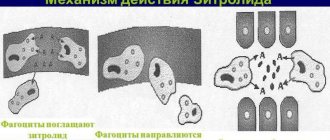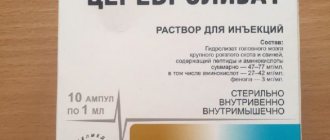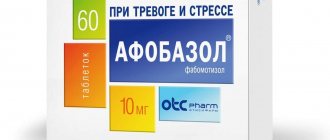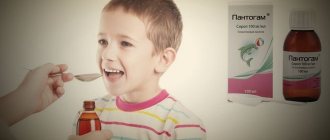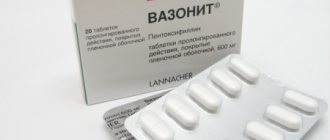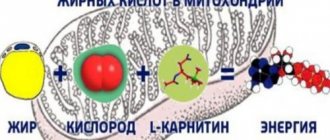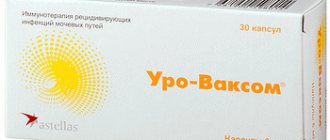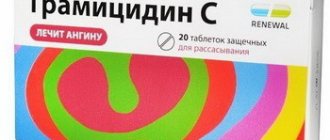Citicoline 1000 mg is a medicine that is produced in the form of a sachet for oral administration. This medication belongs to the pharmacological group of nootropic drugs that have a stimulating effect on the central nervous system.
By its nature of origin, citicoline is a natural biochemical compound that acts as an intermediate product of the metabolism of phosphatidylcholine. This substance is a basic structural component of the cell membrane of brain tissue.
Citicoline can be used as an independent therapy, or included in a general treatment course along with other medications. The average price of this drug is 710 rubles.
Release forms and composition of the drug
Citicoline 1000 mg is available in the form of a liquid solution for oral administration, which is packaged in polyethylene sachets with a capacity of 10 ml each. The drug is also bottled in 30 ml bottles.
The solution of the drug Citicoline is completely transparent without signs of sedimentation or turbidity, with a pronounced strawberry aroma. The main packaging of this medication is a rectangular cardboard box, inside which contains detailed instructions for using the nootropic drug. The price of Citicoline solution depends on the capacity of the bottle of medicine.
The main component of this drug is the biologically active substance citicoline.
The following ingredients of the therapeutic solution perform an auxiliary function:
- sterile and purified water;
- potassium sorbate;
- glycerol;
- sorbitol with a concentration of at least 70%;
- citric acid, which is a preservative;
- strawberry flavor;
- sodium citrate;
- saccharin.
All components of the Citicoline medicinal solution, which is available in sachet form, are completely safe for the human body. This drug has a simple pharmacological formula, which is characterized by a pronounced therapeutic effect.
Pharmacological properties
Citicoline - 1000 mg sachet (the price of the medicine fully corresponds to its quality characteristics), which has the following pharmacological properties:
- helps eliminate swelling of brain tissue;
- is directly involved in reducing intracranial pressure in patients who need this therapeutic effect;
- improves blood circulation in the brain and also provides its tissues with an additional source of nutrients;
- activates the protective mechanisms of the central nervous system through the synthesis of the antioxidant substance glutathione;
- saturates neurons with additional energy;
- has a positive effect on intracellular metabolism, preventing premature death of brain cells;
- stimulates the synthesis of additional acetylcholine;
- has a significant neuroprotective effect on patients suffering from cerebral ischemia;
- accelerates the recovery process for patients who have previously suffered a stroke or traumatic brain injury, which allows for maximum restoration of impaired central nervous system functions;
- reduces the severity and also shortens the duration of post-traumatic syndrome in patients with severe brain pathologies;
- helps eliminate signs of neurological disorders;
- increases the level of attention, improves memory, cognitive functions of the brain, has a positive effect on reaction speed and psychomotor functions of the central nervous system;
- reduces the frequency of amnesia attacks in patients with organic lesions of the cerebral cortex.
The pharmacological properties of the drug Citicoline in the form of an oral solution are realized only if it is taken during a continuous course of treatment. This medication is not designed for symptomatic therapy.
Pharmacological authorities
Pharmacodynamics.
Citicoline stimulates the biosynthesis of structural phospholipids in neuronal membranes, which is confirmed by magnetic resonance spectroscopy. In addition, this mechanism of action of citicoline is enhanced by the functioning of membrane mechanisms such as ion exchange pumps and receptors, the modulation of which is necessary for the normal conduction of nerve impulses.
Due to its stabilizing effect on the membrane of neurons, citicoline exhibits anti-clotting power, which reduces the swelling of the brain.
Citicoline inhibits the activation of certain phospholipases (A1, A2, C and D), reduces the formation of free radicals, prevents the destruction of membrane systems and preserves antioxidant systems such as glutathione.
Citicoline preserves the energy supply of neurons, inhibits apoptosis and stimulates the synthesis of acetylcholine.
It has been proven that citicoline also has a preventive neuroprotective effect in focal cerebral ischemia.
It appears that citicoline significantly increases functional improvement in patients with acute ischemic disorders of cerebral blood flow, which coincides with increased volume growth ischemic brain damage based on neuroimaging data.
In patients with traumatic brain injury, citicoline accelerates recovery and changes the severity and intensity of post-traumatic syndrome.
Citicoline improves anxiety and cognitive impairment, cognitive and neurological disorders associated with cerebral ischemia, and reduces the manifestations of amnesia.
Pharmacokinetics.
After administration of the drug, be careful of the significant increase in the level of choline in blood plasma. The drug is metabolized in the intestine and liver by choline and cytidine.
After administration, citicoline is widely distributed in the structures of the brain with liquid inclusions of the choline fraction in structural phospholipids and the cytidine fraction in cytidine nucleotides and nucleic acids. In the brain, citicoline is produced in the tissue, cytoplasmic and mitochondrial membranes, integrating into the structure of the phospholipid fraction.
A very small amount of the dose is detected in excrement and feces (less than 3%). Approximately 12% of the dose is eliminated via CO2, which is visible. When the drug is removed from the section, two phases are observed: the first phase – lasting 36 years, in which the intensity of the excretion changes slightly, and the other phase – in which the intensity of the excretion changes much more. The same phasicity itself is guarded against when displayed through dikhalnye paths. The rate of CO2 removal changes rapidly over a period of about 15 years, then decreases even more.
Pharmacodynamics and pharmacokinetics
The pharmacodynamics of Citicoline is different in that this biologically active substance is a precursor of the basic ultrastructural elements of the cell membrane. These are mainly phospholipids, without which the full functioning of brain tissue is impossible.
Citicoline oral solution has a broad therapeutic effect, promoting the restoration of cells with damaged membranes. The active substance of this drug inhibits the properties of phospholipases and prevents the formation of free radicals. By influencing the physiological mechanisms of apoptosis, Citicoline prevents premature death of brain cells.
The pharmacodynamics of this drug is particularly pronounced in patients who have been diagnosed with pathological conditions of the central nervous system. In patients with acute stroke, the effect of reducing the area of damage to the cerebral cortex is achieved, and more active cholinergic transmission of neural impulses is stimulated.
Patients who have suffered a traumatic brain injury recover 2 times faster, the period of stay in a coma is reduced, and the symptoms of neurological disorders disappear. In patients with chronic hypoxia of the central nervous system, the drug Citicoline can improve memory functions, restore cognitive activity of the brain, and improve the patient’s quality of life.
The pharmacokinetics of Citicoline oral solution is characterized by rapid absorption of its constituent components, which are absorbed into the intestinal wall. The biological availability of this medication is the same as after its intravenous administration.
The metabolism of this nootropic drug occurs in the liver tissues, and also partially in the intestines. The chemical half-life products of the drug are the substances cytidine and choline. A high content of the latter component is found in the blood serum. Citicoline distributes evenly in brain tissue, activating its metabolite in the form of choline.
Having reached the brain tissue, Citicoline is integrated into the cellular structure of the cytoplasmic and mitochondrial membranes. Subsequently, the active substance of this drug is directly involved in the formation of phospholipids.
Clinical trials of Citicoline oral solution have shown that only 15% of this medication is excreted from the human body.
About 3% of the drug's half-life products are disposed of by the kidneys in urine. Another 12% is excreted along with carbon dioxide during the act of breathing. The rest of Citicoline's metabolites are used by the human body to maintain or restore brain function. The average duration of the complete elimination of chemical half-life products of the drug is 15 hours.
Citicoline: new therapeutic options
Currently, there is a significant increase in cerebrovascular pathology. Cerebrovascular diseases (CVD) are one of the main causes of mortality and permanent disability in patients. In clinical practice, drugs classified as “neuroprotectors” are widely used. The drug Ceraxon (citicoline), a natural endogenous nucleoside consisting of cytidine and choline linked by a diphosphate bridge, and participating in the synthesis of membrane phospholipids as an intermediate, has a targeted effect on the key links in the processes of death of nerve cells of vascular, traumatic, toxic and other etiologies from the group of neuroprotectors. link Citicoline not only restores damaged neuronal membranes, but also serves as a choline donor for the synthesis of acetylcholine [1]. Citicoline also inhibits the synthesis of phospholipase A2, reducing the accumulation of free fatty acids, restores the functioning of Na+/K+-ATPase, enhances the activity of antioxidant systems, prevents the processes of oxidative stress and apoptosis, has a positive effect on cholinergic transmission, modulates dopamine and glutamatergic neurotransmission. In addition, Ceraxon has a pronounced neuroreparative effect, stimulating the processes of neuro- and angiogenesis [2].
The formation of citicoline in neuronal membranes and phospholipid macrosomes is the rate-limiting step in the synthesis of phosphatidylcholine (lecithin); in this case, citicoline serves as a choline donor for the synthesis of acetylcholine and can limit the volume of the latter; oxidation produces betaine, a donor of methyl groups [3]. Since citicoline is a natural metabolite of biochemical processes in the body and combines neurotransmitter and neurometabolic effects in its spectrum of action. The most important of them is the activation of the biosynthesis of membrane phospholipids of brain neurons, primarily phosphatidylcholine.
Cognitive impairment is a key manifestation of dyscirculatory encephalopathy (DEP), which largely determines the severity of the patient’s condition. At the early stage of DEP, moderate neurodynamic disturbances predominate in the form of slowness, aspontaneity, decreased performance, exhaustion, and weakened concentration. Further progression of the cognitive defect in DEP is associated with the development of dementia, in which cognitive deficit leads to limitation of daily activities and at least partial loss of everyday independence. Treatment of patients with DEP is, in fact, limited to therapeutic effects on the manifestations of DEP stages I and II. The main directions of management of these patients are reversing the developed decompensation of the pathological process, preventing the progression of the disease, including stroke, reducing the severity of cognitive disorders and neurological deficits [4, 5].
Some studies devoted to the diagnosis and principles of treatment of cognitive disorders in vascular diseases of the brain provide a rationale for the prescription of citicoline for mild cognitive impairment (MCI) and dementia [6]. The authors conclude that the positive effects of citicoline affect all stages of the ischemic cascade, and the combination of neuroprotective and neurometabolic effects of the drug determines its ability to reduce beta-amyloid deposition in the brain. Citicoline is considered as a promising drug in the treatment of vascular forms of MCI, which also develop in patients taking ethanol for a long time.
Clinical studies in recent years have shown the neuroprotective effect of citicoline in acute cerebrovascular accident (ACVA), in the early recovery period, and CI therapy. Review articles on the drug citicoline provide data from foreign studies dating back to the 1980s. [3]. Analysis of the data obtained, based on the principles of evidence-based medicine, showed the effectiveness of citicoline in acute cerebral stroke. Citicoline is able to potentiate the effect of other drugs in the treatment of acute cerebrovascular pathology, including thrombolytics, antiplatelet agents and neurotrophics. In this regard, the prescription of citicoline is justified in complex therapy with other drugs that improve neurometabolism, such as Actovegin.
A study was conducted to evaluate the effectiveness of complex therapy with the drugs Ceraxon and Actovegin with the participation of 104 patients aged 55–80 years in the acute period of ischemic stroke [7]. Patients were divided into 4 groups: patients of group 1 (n = 25) received standard basic therapy; 2nd (n = 25) - for 10 days they additionally received citicoline (1000 mg/day, intravenously, drip into 200 ml of saline); 3rd (n = 26) - for 10 days they additionally received Actovegin (250 ml of a 20% solution intravenously, drips in saline); 4th (n = 28) - combination therapy with citicoline and Actovegin for 10 days. The dynamics of the condition were carried out on the 2nd, 7th, 10th and 30th days of stroke, the parameters of computed tomography of the brain (on the 5th day), neurological status, indicators of the US National Institute of Health stroke scale were assessed. Health, NIH), Rankin scale, Barthel index. The most pronounced effect of the therapy was obtained in the 4th group of patients receiving combination therapy with citicoline and Actovegin, compared with the control group: on the 5th day, a tendency was found towards a more significant decrease in the volume of ischemic brain damage in dynamics, by 10- On the 1st day there was a significant acceleration in the regression of neurological symptoms according to the NIH scale, and by the 30th day there was a significantly more significant functional recovery according to the Rankin scale and the Barthel index. It was found that in the 3rd group of patients receiving citicoline, the dynamics of indicators were similar to those in the 4th group (recovery according to the Rankin scale and Barthel index). Thus, the combined use of citicoline and Actovegin is most optimal, since it leads to a more complete regression of the neurological deficit and greater functional independence of the patient by the end of the acute period of stroke.
Review articles [8, 9] focus on improving cognitive functions under the influence of citicoline (optimal dose - 1 g/day) in the treatment of vascular dementia and dementia in neurodegenerative diseases (Alzheimer's disease, Parkinson's disease), in which the administration of citicoline slows down the development of cognitive deficiency [3]. It is specifically noted that when citicoline is prescribed 600 mg/day for 20 days as monotherapy in patients with Parkinson's disease, an improvement in motor function is also observed (decreased bradykinesia, rigidity, tremor). The use of citicoline in complex therapy of Parkinson's disease allows one to halve the required dose of L-DOPA and, accordingly, minimize the side effects of L-DOPA replacement therapy, and in the early stages of the disease, significantly delay the administration of L-DOPA [8]. It is also emphasized that, according to the results of numerous studies, the use of citicoline 750–3000 mg/day on the first day after traumatic brain injury (TBI), followed by a course of treatment for 14–20 days, significantly reduces the duration of the comatose period.
In vascular diseases of the brain, asthenic syndrome often occurs not in isolation, but in combination with other syndromes. A number of studies have shown the high effectiveness of the injectable form of citicoline, both as monotherapy and in complex therapy of acute and chronic cerebral ischemia and associated asthenic conditions [5]. In 2011, a study was conducted to evaluate the effectiveness and safety of citicoline in 60 patients aged 50–70 years who were diagnosed with stroke with MCI [10]. During the study, patients were divided into 2 groups: the main group (n = 30), who received citicoline along with basic therapy, and the control group (n = 30), who received only basic therapy. Citicoline was prescribed daily at a dose of 3 ml 2 times a day for 6 months. An analysis of the dynamics of indicators was carried out: neurological status and a battery of tests to assess frontal dysfunction, a clock drawing test, verbal associations, memorization and reproduction of 12 words, a study of visual memory), emotional status, assessment of quality of life, subjective assessment of the effectiveness of treatment. By the 3rd month of observation, patients taking citicoline showed an increase in strength in the limbs; after 6 months, a significant improvement in indicators was obtained on scales assessing neurological deficits (regression of CI, emotional-affective and behavioral disorders) [10].
A study was conducted to evaluate the effectiveness of citicoline in the recovery period of ischemic stroke in patients with CI [11]. 33 patients aged 46–82 years who had suffered an ischemic stroke were examined. According to neuropsychological examination, all patients were found to have mild or moderate CI in the form of memory, attention and thinking disorders. According to the severity of CI, patients were divided into two groups: 1st (n = 22) with moderate CI, citicoline was prescribed 1000 mg/day intravenously for 10 days; 2nd (n = 11) with milder CIs, citicoline was administered 500 mg/day intravenously for 10 days. Under the influence of treatment with citicoline at a dose of 500 or 1000 mg/day for 10 days, positive changes in the neurodynamic characteristics of cognitive functions (improved memory, thinking) were noted. The improvement in cognitive function was more significant in the citicoline 1000 mg/day group. No adverse drug reactions have been recorded when prescribing citicoline. Thus, the study showed the effectiveness and safety of the use of citicoline in the recovery period in patients with post-stroke CIs [11].
Review articles provide data on the optimal dosing regimen based on the results of clinical studies of the drug [12]: citicoline, administered at a dose of 1000 mg/day for 8 weeks, accelerates the regression of hemiplegia; intravenous administration of the drug at a dose of 750 mg/day for 10 days, starting from the first 48 hours after the onset of stroke symptoms, contributed to the restoration of motor and cognitive functions; with intravenous administration of 1 g for 14 days, a faster recovery of consciousness and a significant improvement in general condition and functional status were noted. It is noted that a relatively high functional status is achieved in 61.3% who took citicoline at a dose of 500 mg/day, 39.4% who took citicoline at a dose of 1000 mg/day, and 52.3% who took citicoline at a dose of 2000 mg/day. days The degree of improvement in the groups taking citicoline at a dose of 500 and 2000 mg/day was approximately the same.
A number of studies have shown that citicoline can correct CI already at the initial stages of its manifestations in patients with DEP. The high effectiveness of citicoline in the prevention and treatment of moderate cognitive disorders of vascular origin has been shown [4]. Its use promotes regression of CI, reduces concomitant emotional, affective and behavioral disorders. In addition, citicoline is able to potentiate the effect of other drugs in the treatment of acute cerebrovascular pathology, including thrombolytics, antiplatelet agents and neurotrophics [8]. Prescription regimens for citicoline have already been developed and are actively used: 1000 mg for 10 days intramuscularly or intravenously once a day, then an oral solution of citicoline 2 ml 3 times a day for 3 months [13], or daily at a dose of 3 ml 2 times a day for 6 months. The duration of neuroprotection can last up to 12 months [3].
Currently, the universality of the mechanisms of cell damage in various types of pathological processes, including exposure to ethanol, has been proven. The final link in inflammation and ischemia is a violation of redox processes, a violation of metabolism and energy supply to cells. Today, neurotrophicity, neuroprotection, neuroplasticity and neurogenesis are considered fundamental neurobiological processes involved in the implementation of endogenous protective activity, as well as in attempts to counteract pathophysiological damaging mechanisms and stimulate endogenous repair. Neuroprotection is defined as the continuous adaptation of a neuron to new functional conditions, as the key to reducing damage to brain tissue caused by ischemia, it acts at the level of a molecular cascade that causes dysfunction and death of neurons [14].
Clinical experience with the use of citicoline in alcoholism and drug addiction is not as extensive, although there is some evidence of its effectiveness in these conditions [2, 15]. Thus, in a randomized, double-blind study by A. Chinchilla et al. (1995) [16] studied the effects of citicoline in 20 patients with alcohol withdrawal syndrome. In the group of patients receiving citicoline, at the end of the study (after 2 months), there was a significant improvement in attention and concentration, as well as orientation in time and space. As the authors noted, this observation suggests that the drug may be useful in the treatment of chronic alcoholism.
A number of studies have shown the effectiveness of using citicoline in drug addicts, including those who used ethanol. Thus, PF Renshaw et al. (1999) [17] conducted a double-blind, placebo-controlled study to evaluate the effect of citicoline on improving the functional state of the central nervous system. The observation experience included 14 patients with cocaine addiction: the “citicoline” group (n = 6; 38.0 ± 6.1 years) and the “placebo” group (n = 8; 35.8 ± 6.5 years). Citicoline was prescribed in capsules 500 mg 2 times a day for a short course (2 weeks). Patients in this group also had a long history of ethanol use. The effect of citicoline on immediate drug cravings and subjective mood was assessed. During the study, according to the results of the “Cocaine Dependence” questionnaire, a significant (p = 0.002) decrease in craving for the drug was noted when comparing indicators “before and after treatment,” as well as a decrease in the level of anxiety (p = 0.013), improvement in mood (the desire to experience pleasant feelings) on a visual analogue scale (p = 0.07). Subjective scores after treatment in the “Need (belief) for cocaine” test in the placebo group were significantly higher (p = 0.057) than in the citicoline group. Significant (p = 0.046) changes were also noted after treatment in the citicoline group in the “Desire to use cocaine right now” and “Lack of control over cocaine use” tests. During the entire observation period, no adverse drug reactions (ADRs) were noted. The results of a pilot study suggest that citicoline may be an adjunct to primary treatment.
In another study, ES Brown et al. (2007) [14] conducted a 12-week, randomized, double-blind, placebo-controlled study of citicoline as an adjunctive treatment in patients with mania (hypomania) and cocaine dependence. The purpose of the study was to assess changes in declarative memory, mood, and craving (dependence) for cocaine. The study included 44 patients who were prescribed citicoline (n = 23; 42.1 ± 6.6 years) or placebo (n = 21; 40.7 ± 8.0 years) according to the regimen: starting with 1 table. (500 mg/day) followed by an increase to 2 tablets. (1000 mg/day) for two weeks, then 3 tablets. (1500 mg/day) for four weeks and 4 tablets. (2000 mg/day) for six weeks. Mood, cocaine craving, and ADRs were assessed every two weeks, and cognition every four weeks for 12 weeks. No adverse reactions were reported by patients. Based on the results of the Rey Auditory Verbal Learning Test, the authors concluded that citicoline could be considered a new approach in the treatment of drug addiction.
SJ Yoon et al. (2010) [18] conducted a longitudinal proton magnetic resonance spectroscopy study to evaluate changes in neurometabolite levels after 4 weeks of citicoline therapy in patients with methamphetamine (MA) addiction. The study involved 31 MA-dependent patients who received citicoline (n = 16; 38.6 ± 3.9 years) or placebo (n = 15; 38.3 ± 3.5 years) for four weeks. Based on the levels of N-acetylaspartate and choline in the prefrontal zone, it was found that changes in these markers were higher in the citicoline group than in the placebo group. No adverse reactions were noted. Based on the data obtained, the authors concluded that the results may indicate that citicoline therapy may have a direct neuroactive effect on reducing the dosage of drug use in MA dependence.
Recently, a double-blind, placebo-controlled study was conducted to evaluate the effects of citicoline on volunteers with cocaine addiction [19]. A total of 43 people (control group) and 29 participants with drug addiction (marijuana, alcohol) took part in the study, of which the citicoline group (n = 15; 38.4 ± 4.5 years) and placebo (n = 14; 39.0 ± 5.3 years). Citicoline was prescribed 500 mg/day 2 times a day. The course of treatment was 8 weeks, followed by a 4-week continuation of treatment in the group of cocaine addicts. During the study period, adverse reactions were noted (headache, feeling cold/sweating, muscle cramps, nausea/indigestion/diarrhea, trembling/shaking), which were observed in both groups, including in the control group. According to the results of patient self-reports over the entire observation period, there was an improvement in concentration, appetite, sleep quality, mainly in the citicoline group, as well as a decrease in the level of irritability and physical discomfort after therapy. However, there were no significant changes in the emotional domain (mood, anxiety, tension) either during the treatment period or during subsequent treatment, and there were also no significant differences between the citicoline and placebo groups. In each group (citicoline, placebo), in addition to marijuana use, patients had a history of alcoholism and tobacco smoking. These studies allowed the authors to suggest that citicoline can be used as an adjuvant (reducing the dose of use) in the treatment of alcohol and marijuana addiction. The results of this study should be interpreted with caution because it was not designed to assess the amount of alcohol or marijuana use among cocaine-dependent individuals.
Due to its stabilizing effect on the membrane, citicoline has an anti-edematous effect and prevents the development of cerebral edema, and by suppressing phospholipases A1, A2, C-D, it reduces the formation of free radicals and strengthens antioxidant defense systems. The above properties of the drug allow us to recommend citicoline for inclusion in the standard treatment regimen for patients with dizziness of central origin of vascular etiology [20]. It is well known that otoneurological symptoms are an integral part of the clinical picture of CVD and are observed both in the symptom complex of asymptomatic ischemic brain damage and in stroke of varying severity.
The relevance and medical and social significance of optimizing the treatment of dizziness of vascular origin are determined not only by its widespread prevalence, but also by the frequent chronicity of this condition, which requires significant effort [21]. Dizziness is one of the most common complaints; This is the second reason for visiting a doctor after a headache. It is estimated that dizziness can manifest itself in about 80 diseases: neurological, mental, cardiovascular, ophthalmological, otorhinolaryngological, etc. [22]. A common cause of dizziness in people of working age are osteochondrosis of the cervical spine and vertebrobasilar discirculation. A prerequisite for the development of vertebrobasilar discirculation can be deformations (pathological tortuosity, kinks) and anomalies (hypoplasia, anomalies in the origin, location and entry of arteries, etc.) of the vertebral arteries, which occur in 20–35% of cases in patients with vascular diseases of the brain [21] .
Dizziness in cerebrovascular diseases is caused by transient or persistent disruption of the blood supply to the central or peripheral parts of the vestibular system [22]. Dizziness (vertigo or dizziness) is an illusory sensation of movement of surrounding objects relative to the patient or movement of the patient relative to objects. The concept of dizziness also includes imbalance, “ringing/tinnitus”: all these symptoms significantly reduce the patient’s quality of life and ability to work. At the first stage of treatment of acute and chronic diseases of the vestibular analyzer, a combination of vasoactive, nootropic drugs, dehydrating drugs, anti-vertigo drugs and non-steroidal anti-inflammatory drugs is usually prescribed [20, 22]. Often such combination therapy is not effective enough, which requires increasing the doses of the drugs used and, thus, increasing the risk for patients.
Of particular interest is a study on the use of high doses of citicoline for dizziness, conducted between January and December 2010 in two major neurological clinics in Sofia, Bulgaria. This open-label study provided a comparative assessment of the short-term therapeutic effectiveness of citicoline in patients with central vertigo of vascular etiology. Citicoline was prescribed at a dosage of 2000 mg/day intravenously and 1000 mg/day intravenously against the background of insufficiently effective standard therapy [20]. The study included 40 patients (mean age 55.5 ± 4.2 years), who were divided into two groups: group 1 (n = 20) received citicoline at a dose of 2000 mg/day, group 2 (n = 20) - citicoline at a dose of 1000 mg/day. Treatment regimens: for group 1 - a dose of citicoline 2000 mg/day for 5 days, then orally 500 mg/day (2 ml + 2 ml + 1 ml) for up to 30 days, for group 2 - a dose of citicoline 1000 mg/day for 5 days, then orally 500 mg/day (2 ml + 2 ml + 1 ml) for up to 30 days. Course of treatment up to 5 days: citicoline was added to 100 ml of saline solution and administered intravenously for 30–60 minutes. Next, citicoline in both groups was prescribed orally for up to 30 days at a dose of 500 mg/day (2 ml + 2 ml + 1 ml, in each milliliter - 20 drops of a solution containing 100 mg of citicoline). The dynamics of the condition were assessed at certain “points” of the study: 1 - before the start of treatment with citicoline, 2 - 5 days after a course of parenteral treatment in the form of intravenous infusion at a daily dose of 1000 mg/day or 2000 mg/day of citicoline and 3 - on the 30th day after oral administration at a dose of 500 mg/day (2 ml + 2 ml + 1 ml). During the study, patients took only the appropriate anti-vertigo drug (betagistine hydrochloride) and a certain dose of citicoline. To assess the dynamics of the condition, the following were used: 1) a questionnaire containing a detailed otoneurological history; 2) neurological and otological status; 3) tone audiometry threshold; 4) study of the vestibular analyzer (spontaneous and evoked responses); 5) electroencephalography. Treatment with citicoline should be started with a dose of 2000 mg/day intravenously, since the therapeutic effect is achieved faster, and no significant differences in tolerability or NLR were observed compared with a dose of 1000 mg/day. The study found: on the 5th day of parenteral use of citicoline 2000 mg/day (group 1), the most pronounced positive effect was obtained for vertigo, dizziness and the subjective sensation of “tinnitus” (in approximately 1/2 of cases), while in group 2 (citicoline 1000 mg/day) - only in 1/3 of cases (vertigo: group 1 - 20% vs group 2 - 35%; dizziness 25% vs 40%; "tinnitus" - 25% vs 35%) . A significant effect was observed regarding the correction of instability in both groups - about half of all patients. On the 30th day of treatment, vertigo, dizziness, imbalance, and “tinnitus” persisted in only 1/3 of the patients, and the severity of symptoms decreased. The greatest effect on spontaneous and, in particular, latent nystagmus was noted on the 5th day of taking citicoline at a dose of 2000 mg/day. After the fifth day of treatment with citicoline at a dose of 2000 mg/day, an improvement in asymmetry (according to electronystagmography) was noted in more than 20% of patients compared to the group of patients receiving citicoline at a dose of 1000 mg/day. The improvement in subjective results was accompanied by objective changes in the examination parameters of the vestibular analyzer, the symmetry of the reaction, and the results of coordination and statokinetic tests. This fact allows us to recommend starting citicoline therapy with a dose of 2000 mg/day, since a high dose leads to a significant acceleration of the recovery of vestibular function. The results obtained allow us to postulate the following: initiation of parenteral therapy with citicoline at a dose of 2000 mg/day, lasting at least 5 days, then switching to citicoline 500 mg/day orally (2 ml + 2 ml + 1 ml) for a period of 1 to 3 months in as part of standard treatment for patients with dizziness of central origin of vascular etiology [20]. Thus, this study expands the indications for the use of citicoline as part of complex therapy in patients with dizziness.
Conclusion
A number of studies have shown the effectiveness of the use of the drug Ceraxon in the treatment of chronic cerebral ischemia accompanied by CI, in the treatment of vascular dementia and dementia in neurodegenerative diseases (Alzheimer's disease, Parkinson's disease). In addition, the use of Ceraxon in the complex therapy of Parkinson's disease allows one to halve the required dose of L-DOPA. The neuroprotective effect of citicoline has been shown in acute stroke, in the early recovery period, as well as in complex therapy with Actovegin. There is experience in using Ceraxon in drug addicted patients and people suffering from alcohol addiction. Recent studies have shown the therapeutic effectiveness of Ceraxon in patients with central dizziness of vascular etiology of parenteral therapy with Ceraxon at a dose of 2000 mg/day, lasting at least 5 days.
Literature
- Plataras C., Taskiris S., Angelogianni P. Effect of CDP-choline on brain acetylcholinesterase and Na+/K+-ATPase in adult rats // Clin Biochem. 2000; 33: 351–357.
- Secades JJ Citicoline: pharmacological and clinical review, 2010 update // Rev Neurol. 2011. Vol. 52(Suppl.2):S1-S62.
- Shavlovskaya O. A. Neuroprotective therapy of neurological deficit in cerebrovascular pathology // Practicing doctor today. 2012. No. 3. pp. 39–44.
- Shavlovskaya O. A. Neuroprotective therapy for chronic cerebral ischemia // Treating Doctor. 2013. No. 9. pp. 32–37.
- Shavlovskaya O. A. Therapy of asthenic conditions in patients suffering from chronic cerebral ischemia // Farmateka. 2013. No. 19 (272). pp. 56–61.
- Sorokina I. B., Gudkova A. A., Gekht A. B. Moderate cognitive impairment in cerebrovascular diseases: diagnosis and principles of therapy // Difficult Patient. 2010; 8 (3): 9–13.
- Shamalov N. A., Stakhovskaya L. V., Shetova I. M. et al. Study of the safety and effectiveness of combination therapy with citicoline and Actovegin for patients in the acute period of ischemic stroke // Journal of Neurology and Psychiatry named after. S. S. Korsakova. 2010. No. 9. Issue. 2. pp. 13–17.
- Boyko A. N., Kabanov A. A. Cytocoline: new possibilities of neuroprotection and pharmacotherapy for diseases of the nervous system // Farmateka. 2007, no. 15, p. 42–48.
- Rumyantseva S. A., Silina E. V., Svishcheva S. P., Shuchalin O. G., Koryukova I. V., Eliseev E. V. Complex neuroprotection in patients with vascular pathology of the brain // Breast Cancer. 2008; 16 (17): 1124–1129.
- Putilina M.V. Features of combined neuroprotective therapy for acute cerebrovascular accidents // Breast Cancer. 2009, vol. 17, no. 4, p. 261–267.
- Shakhparonova N.V., Kadykov A.S., Kashina E.M. Post-stroke cognitive impairment and their therapy with Ceraxon // Neurology, neuropsychiatry, psychosomatics. 2011, 3: 56–60.
- Shetova I.M., Shamalov N.A., Botsina A.Yu. Use of citicoline in the acute period of cerebral stroke // Journal of Neurology and Psychiatry named after. S. S. Korsakova. 2009. No. 12, issue. 2. pp. 51–54.
- Putilina M.V., Nakhlas M.S. The place of neuroprotective therapy in the early rehabilitation period of ischemic stroke // Treatment of diseases of the nervous system. 2011; 3 (8): 26–31.
- Brown ES, Gorman AR, Hynan LS A randomized, placebo-controlled trial of citicoline add-on therapy in outpatients with bipolar disorder and cocaine dependence // J Clin Psychopharmacol. 2007. Vol. 27. R. 498–502.
- Shavlovskaya O. A. Possibilities of treating post-alcohol changes in the nervous system // Treating Doctor. 2014. No. 5. pp. 24–29.
- Chinchilla A., Lopez-Ibor JJ, Vega M., Camarero M. CDP-colina en la evolucion de las funciones mentales en el sindrome de abstinence alcoholica // Psiquiatria Biologica. 1995; 2: 171–175.
- Renshaw PF, Daniels S, Lundahl LH et al. Short-term treatment with citicoline (CDP-choline) attenuates some measures of craving in cocaine-dependent subjects: a preliminary report // Psychopharmacology. 1999. Vol. 142. P. 132–138.
- Yoon SJ, Lyoo IK, Kim HJ Neurochemical alterations in methamphetamine-dependent patients treated with cytidine-50-diphosphate choline: a longitudinal proton resonance magnetic spectroscopy study // Neuropsychopharmacology. 2010. Vol. 35. P. 1165–1173.
- Licata SC, Penetar DM, Ravichandran C. et al. Effects of daily treatment with citicoline: A double-blind, placebo-controlled study in cocaine-dependent volunteers // J Addict Med. March 2011; 5(1):57–64. doi:10.1097/ADM.0 b013 e3181 d80 c93; J Addict Med. Author manuscript; available in PMC 2012 March 1.
- Petrova D., Maslarov D., Angelov I., Zekin D. Analysis of therapeutic efficacy of citicoline in patients with vertigo of central origin and vascular aetiology // Am. J. Neuroprotec. Neuroregen. 2012. Vol. 4. No. 1: 1–8.
- Morozova S.V., Zaitseva O.V., Naletova N.A. Dizziness as a medical and social problem // RMJ. 2002. No. 16. pp. 725–729.
- Zamergrad M.V. “Vascular” dizziness // RMJ. 2007. No. 9. pp. 769–772.
O. A. Shavlovskaya, Doctor of Medical Sciences
GBOU VPO First Moscow State Medical University named after. I. M. Sechenova Ministry of Health of the Russian Federation, Moscow
Contact Information
Indications for use
Citicoline - 1000 mg sachet (the price of this nootropic drug is at an average level in terms of availability for the general population), which is indicated for use in patients of the adult age group who suffer from the following pathological conditions:
- ischemic stroke, which is in the acute phase of its development (in this case, the oral solution of Citicoline can only be used as part of complex therapy);
- traumatic brain injury with dysfunction of the central and peripheral nervous system;
- vascular and degenerative diseases of brain tissue;
- cognitive and behavioral disorders;
- rehabilitation period after suffering a hemorrhagic or ischemic stroke of the brain;
- impaired cerebral circulation, as well as elimination of negative consequences caused by this pathology;
- cerebral and neurological disorders;
- decreased attention, speed of psycho-emotional reactions, memory deterioration, impaired coordination caused by negative changes in the structure of brain tissue.
The drug Citicoline is indicated for use in patients who have undergone brain surgery. In case of severe damage to the central nervous system, the oral solution is used as an adjuvant in combination with potent medications.
Buy Ceraxon solution for internal use 100 mg/ml 10 ml No. 10 in pharmacies
Oral solution in the form of a clear, colorless liquid with a characteristic strawberry odor. Indications : acute period of ischemic stroke (as part of complex therapy); — recovery period of ischemic and hemorrhagic strokes; — traumatic brain injury, acute (as part of complex therapy) and recovery period; — cognitive and behavioral disorders in degenerative and vascular diseases of the brain. Dosage regimen The drug is taken with meals or between meals. Before use, the drug can be diluted in a small amount of water (120 ml or 1/2 cup). Acute period of ischemic stroke and traumatic brain injury: the recommended dose is 1000 mg (10 ml or 1 sachet) every 12 hours. Duration of treatment is at least 6 weeks. Recovery period of ischemic and hemorrhagic strokes, recovery period of traumatic brain injury, cognitive and behavioral disorders in degenerative and vascular diseases of the brain: the recommended dose is 500-2000 mg/day (5-10 ml 1-2 times/day or 1 sachet ( 1000 mg) 1-2 times/day). The dose and duration of treatment depend on the severity of the symptoms of the disease. Elderly patients do not require dose adjustment of Ceraxon®. Rules for using a dosing syringe 1. Place the dosing syringe in the bottle (the syringe plunger is completely lowered). 2. Carefully pull the plunger of the dosing syringe until the solution level is equal to the corresponding mark on the syringe. 3. Before taking, the required amount of solution can be diluted in 1/2 glass of water (120 ml). After each use, it is recommended to rinse the dosing syringe with water. Rules for using the drug in sachets 1. Holding the sachet vertically, carefully tear off its edge along the o. 2.The contents of the sachet can be drunk immediately after opening or before use can be diluted in 1/2 glass of water (120 ml). Side effects Very rare (<1/10,000) (including individual cases): allergic reactions (rash, itching, anaphylactic shock), headache, dizziness, feeling of heat, tremor, nausea, vomiting, diarrhea, hallucinations, swelling, shortness of breath , insomnia, agitation, loss of appetite, numbness in paralyzed limbs, changes in the activity of liver enzymes. In some cases, Ceraxon® can stimulate the parasympathetic system and also cause a short-term change in blood pressure. If any of the side effects indicated in the instructions get worse, or any other side effects not listed in the instructions are noticed, you should inform your doctor. Contraindications for use : severe vagotonia (predominance of the tone of the parasympathetic part of the autonomic nervous system); - children and adolescents under 18 years of age (due to the lack of sufficient clinical data); - rare hereditary diseases associated with fructose intolerance; - hypersensitivity to the components of the drug. Use during pregnancy and lactation There is not enough clinical data on the use of citicoline during pregnancy. Although experimental studies on animals have not revealed any negative effects, during pregnancy the drug is prescribed only when the expected benefit of therapy for the mother outweighs the potential risk to the fetus. If it is necessary to use the drug during lactation, the issue of stopping breastfeeding should be decided, since there is no data on the excretion of citicoline in breast milk. Use in children Contraindicated in children and adolescents under 18 years of age. Use in elderly patients Elderly patients do not require dose adjustment of Ceraxon®. Special instructions In the solution for oral administration in the cold, a small amount of crystals may form due to temporary partial crystallization of the preservative. With further storage under recommended conditions, the crystals dissolve within several months. The presence of crystals does not affect the quality of the drug. Impact on the ability to drive vehicles and operate machinery During treatment, patients should be careful when performing potentially dangerous activities that require special attention and speed of psychomotor reactions (including driving a car and other vehicles, working with moving mechanisms, working as a dispatcher and operator). Overdose Due to the low toxicity of the drug, cases of overdose have not been described. Drug interactions Citicoline enhances the effects of levodopa. Ceraxon® should not be prescribed concomitantly with medications containing meclofenoxate. Conditions and periods of storage The drug should be stored out of the reach of children at a temperature not exceeding 30°C. Shelf life: 3 years. Conditions for dispensing from pharmacies The drug is dispensed with a prescription.
Contraindications
Citicoline - 1000 mg sachet (the price of this drug is not higher than that of medications with similar properties), which has a minimum number of restrictions on use.
This nootropic is contraindicated for use in the following cases:
- increased sensitivity of the body to the constituent components of the oral solution, which is expressed in the form of acute and moderate allergic reactions;
- a pronounced state of vagotonia (increased tone of the parasympathetic segment of the nervous system of the autonomic type);
- the state of pregnancy, regardless of the period of fetal development (clinical studies of this drug have not confirmed the possible danger of its constituent substances for the child, but still the manufacturer of the drug recommends refraining from taking Citicoline until the baby is born);
- the patient's age is under 18 years;
- lactation of a newborn baby with mother's milk (during the period of therapy with this nootropic drug, breastfeeding must be stopped).
The prescription of a course of Citicoline oral solution is carried out by the attending neurologist after a preliminary examination of the patient. Depending on the type of neurological disorder or pathological condition of the brain, other factors may arise that preclude therapy with this drug.
Use during pregnancy and lactation
There are no sufficient data on the use of Citicoline in pregnant women. Despite the fact that preclinical studies have not revealed a negative effect of the drug on animals, during pregnancy it should be used only in cases where the expected benefit of treatment for the mother significantly outweighs the possible threat to the fetus.
If it is necessary to prescribe the drug during lactation, breastfeeding should be discontinued, since there is no information on the excretion of citicoline in mother's milk in women, and therefore the risk to the child's health cannot be completely excluded.
Instructions for use, dosage
Citicoline oral solution is taken orally regardless of the schedule or order of meals.
Instructions for use of this medication are as follows:
- You need to take 1 sachet containing the drug.
- Tear off the edge of the bag with the medicine, and then drink the solution in its pure form, or dilute it in 120 ml of water at room temperature, which does not contain carbon dioxide and chemical additives.
- Return to your normal lifestyle.
For adult men and women undergoing Citicoline therapy, the standard dosage of this medication is 1-2 sachets per day. It is recommended to take the drug at the same time of day so that a stable concentration of the constituent substances of the nootropic drug is maintained in the blood plasma.
The total duration of treatment is determined individually and depends on the severity of damage to brain tissue, the presence or absence of neurological disorders. Elderly patients do not need any special dose adjustment of Citicoline and take the medication on a general basis.
Side effects
Citicoline is a 1000 mg sachet (the price of this drug is affordable for most citizens with average incomes), which is well tolerated by most patients in the adult age group.
In medical practice, isolated cases of the following side effects caused by the action of this drug are periodically encountered:
- increased excitement of the central nervous system, sudden changes in mood, nervousness;
- anaphylactic shock with instant swelling of the laryngeal mucosa, suffocation and death;
- red rash localized on the surface of the abdomen, forearms, neck, back, cheeks;
- itching of the skin surface, which appears in the first 1-2 hours after a single dose of the oral solution;
- insomnia and difficulty falling asleep;
- attacks of severe headache;
- hives;
- swelling of epithelial tissues and mucous membranes;
- tremor of the upper extremities, which may also be accompanied by numbness;
- additional stimulation of the parasympathetic nervous system;
- a slight tingling sensation in the upper or lower limbs that are paralyzed;
- auditory and visual hallucinations caused by hyperactivity of certain centers of the brain;
- short-term change in blood pressure towards its increase or decrease;
- feeling of intense heat (while body temperature remains within normal limits);
- nausea and vomiting;
- chills, fever;
- lack of appetite;
- shortness of breath, which intensifies during physical activity and fast walking;
- changes in the level of activity of liver enzymes towards their increase;
- swelling of epithelial tissues, which indicate dysfunction of the cardiovascular system;
- diarrhea caused by short-term intestinal upset due to intolerance to the constituent substances of the oral solution;
- dizziness and lack of coordination of movements.
The appearance of the above symptoms is a reason to stop further taking Citicoline. The occurrence of side effects caused by this nootropic drug requires additional examination and consultation with the attending neurologist. In case of progression of allergic reactions, you will need to undergo a course of therapy with antihistamines in the form of Suprastin, Loratadine, Aleron.
Side effects
Adverse reactions occur very rarely (<1/10,000), including isolated episodes.
On the side of the central and peripheral nervous systems:
severe headache, vertigo, hallucinations.
On the side of the cardiovascular system:
arterial hypertension, arterial hypotension, tachycardia.
On the side of the dichotomy system:
butt.
On the side of the grass tract:
tediousness, vomiting, diarrhea.
On the side of the immune system:
allergic reactions, including viscera, hyperemia, exanthema, urticaria, purpura, itching, angioedema, anaphylactic shock.
Negative reactions:
chills, change the place of administration.
Overdose
In medical practice, there have been no clinical cases of overdose of Citicoline oral solution. If the dosage rules established by the instructions for use are violated, side effects may occur, which are described in the section above.
It is also possible that signs of general intoxication of the body may develop in the form of diarrhea, cramping pain inside the abdominal cavity, dizziness, migraine, low blood pressure, tachycardia, nausea, vomiting, loss of appetite, and exacerbation of neurological symptoms.
Reviews about the drug
| Leave feedback | |
| 1 2 3 4 5 | |
| Send Cancel | |
Send your review
Citicoline
Average rating: Number of reviews: 0
Reviews note the good effectiveness of citicoline for multiple sclerosis, attention deficit disorder, and memory impairment. It is noted that the result does not appear immediately, but as the drug accumulates, so a course of treatment is required.
Among the disadvantages, side effects such as dizziness are noted. Among the tips for use, recommendations not to use the medicine together with Actovegin and antidepressants.
If you have experience using citicoline, please share your feedback and information.
special instructions
Men and women, as well as elderly patients who have congenital fructose intolerance disorders, should not take Citicoline, since it contains sorbitol, methylparaben, and propyl parahydroxybenzoate, which can cause moderate but prolonged allergic reactions in the form of itchy skin , hives, the appearance of a red rash.
Citicoline 1000 mg sachet is marketed under the name Ceraxon
One of the side effects of Citicoline is dizziness, unstable blood pressure, and tremors of the upper extremities. In this regard, during the period of treatment with this drug, special care must be taken when driving vehicles, as well as performing work with increased danger.
Method of congestion and dosage
The recommended dose for adults is 500 mg to 2000 mg per dose depending on the severity of symptoms.
The drug is intended for internal lingual or internal stasis. Internally, the drug can be administered either completely injectively (with a length of 3-5 drops depending on the dose to be administered) or dropwise (speed: 40-60 drops per dose).
The maximum dosage is 2000 mg.
The term “medicine” lies in the course of illness and is prescribed by the doctor.
Summer age patients
do not require dose adjustment.
Use for injection purposes only for one-time curing. Contain the drug immediately after opening the ampoule. It is necessary to use up any surplus of the drug. The drug can be mixed with isotonic agents for internal administration, as well as with hypertonic glucose agents.
If necessary, continue to chew the drug in an oral form.
Children.
There is evidence of the drug being used for disabled children.
Drug interactions
Citicoline oral solution is fully compatible with dextrose and glucose solutions. During the treatment of patients with Alzheimer's disease who additionally take the drug Levodopa, the therapeutic properties of the latter drug may be enhanced.
This fact must be taken into account in the process of selecting the dosage of Citicoline, as well as prescribing the timing of the treatment course. The oral solution is contraindicated for simultaneous use with medications containing meclofenoxate, as the risk of side effects increases.
During therapy with Citicoline, it is necessary to avoid concurrent use of medications that are based on a similar active substance. Failure to comply with this rule can lead to an overdose, increased stimulation of the central nervous system and negative neurological symptoms.
Analogs
The table below presents the main medications that are analogues of Citicoline oral solution, as well as their average cost.
| Drug name | Price |
| Cerakson | 685 rub. |
| Naypilept | 280 rub. |
| Lyra | 640 rub. |
| Quinelle | 610 rub. |
| Recognan | 430 rub. |
| Neurocholine | 490 rub. |
| Citicoline sodium | 545 rub. |
| Ronocyte | 515 rub.. |
| Ceresil | 455 rub. |
All of the above drugs are analogues of the drug Citicoline and have neuroprotective and nootropic properties. These medications should be prescribed only by the attending neurologist.
Terms, conditions of sale and storage
Citicoline oral solution is sold in retail pharmacies only on the basis of a prescription from a doctor. This drug should be stored in the original manufacturer's packaging away from children and exposure to the sun. The air temperature in the room where the medication is located should not exceed +25 degrees.
Otherwise, the pharmacological properties of the solution may change in the direction of loss of its therapeutic effectiveness. The shelf life of Citicoline is 3 years, after which further use of the drug is prohibited. Storing an opened bag of solution is not allowed.
Price
The average cost of the neuroprotective agent Citicoline in the form of a solution is 710 rubles.
Citicoline 1000 mg is a medicinal product in the form of a clear liquid solution with a pleasant strawberry aroma, which is available in the form of a sachet. This medication is intended for internal use, and its absorption occurs in the intestinal tissues.
The use of this neuroprotective agent is indicated for adult men and women who have suffered an ischemic or hemorrhagic stroke, suffer from cerebrovascular accidents, and age-related changes in the structure of brain tissue.
The standard dosage of the medication is 1-2 sachets per day, which are taken regardless of the patient’s schedule and diet. The duration of treatment is set individually by a neurologist, but on average they continue until the functions of the central nervous system are completely restored. The price of this drug is affordable for most consumers with average incomes.
